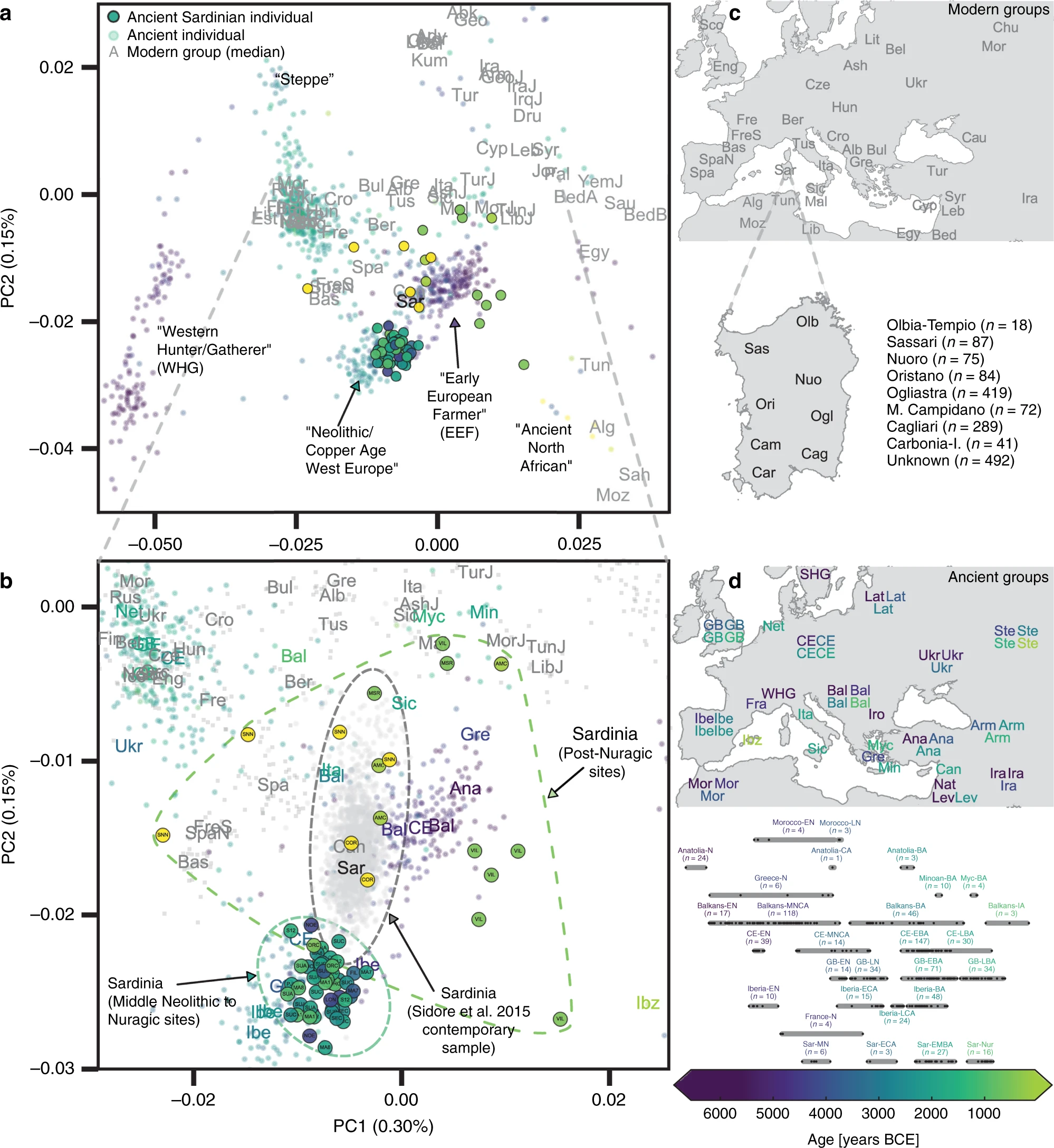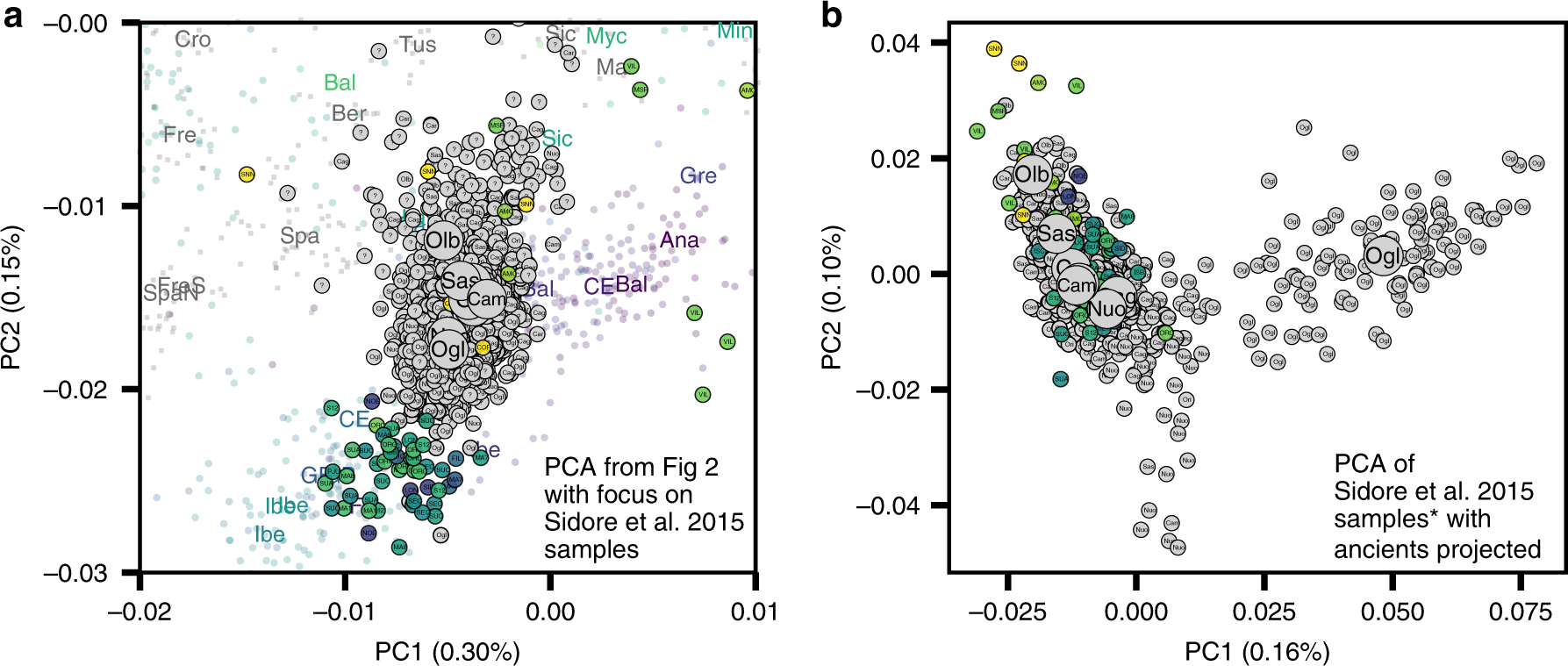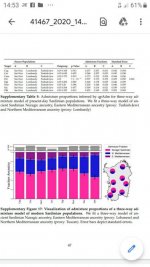@Angela
You won! I did not put too much looks on this thread before and after I read some of the last posts, I was going to speak about these wrong effect of ancient elite burials on statistics. We all (almost all of us at least) know that very often, after colonisations and changes of powers with foreign elites the local ancient pop tends to take again the strong side concerning demography. It occurred a lot of times everywhere. It is not purely scientific but I think Sardinian current pop, one of the most static or stable one in Europe, did not underrun a turnover more than up to 10/15%, so 30 to 70%, gulp! I don't swallow it. Sardinia never was New York, Moscow or Pekin, nor even Roma.
Thank you Moesan.

As I mentioned above, I think the 58-60% continuity figure settled upon by the authors is already pretty low, anything below that is highly unlikely. Certainly, anything over 50% replacement is absurd. The authors specifically point out that modern Sardinian samples can all be modeled with over 50% Nuragic ancestry.
It continues to amaze me that PHD candidates or research associates, supervised by big names in the field, can be so blind to the fundamental factor we are discussing. As I said, anyone can take a look at the steppe in some German Corded Ware individuals and then look at modern Germans, who are close to 50% EEF if I remember correctly. There absolutely wasn't some huge migration from Imperial Italy into Germany to explain it.
In the case of Italy, which has a very complicated genetic history, and just history in general, the problem is compounded by the fact that these researchers know nothing of Italian history and linguistics. You can apply all the advanced statistical methods available, but if you don't know the fundamental historical facts, and use some common sense, for goodness' sakes, your conclusions will be wrong, or, at least, we won't know if you're right or wrong.
If we take a look at where the samples were taken, and at their PCA, some interesting conclusions can be drawn.
It's very clear that the "Punic" individuals are far outside modern Sardinian variation. In terms of admixture, as I have always maintained, to vociferous opposition from the usual quarters, I might add, the Punic settlements in Sardinia represented trading marts, NOT FOLK MIGRATION, and therefore had very little impact on the "host" genetics.
To quote the paper: "the inferences of N.African ancestry are negligible". The amount is less than in Sicily and Spain, fwiw.
In terms of the "North Mediterranean" admixture, they should be using Corsicans or at least Tuscans as a source as that is how much of the more "North Mediterranean" like ancestry would likely have entered the island. The authors don't seem to realize that Sardinia was the back of beyond. It wasn't that easy, given the navigation systems of prior eras, to get from mainland Italy to Sardinia because of ocean and wind currents. Much, if not most, of the migration would have taken the route used since the Mesolithic, which was through Corsica.
As for the "Eastern Mediterranean" ancestry, their name for the "orange" cluster in their admixture runs, it is also present in Spain, France, and Tuscany. Did the Druze and Palestinians migrate to France as well? I think the 5% share for J1-L862 tells that tale. It's much more likely that the "orange" component, representing more Iranian Neolithic like ancestry, arrived with ancestry making its way from the mainland through Corsica, and also from migrations from Southern Italy or Greece.
The steppe ancestry is extremely small as well.
As I've also been saying forever, there is substructure in Sardinia, with Campidano in the SW shifting more toward "Eastern Mediterranean", and the northeast toward "Northern Mediterranean". Of course that's where the Northeast shifts: that's where we find the Corsican dialect speakers. It's also where we find the most M-269.
Really, can't they do a little more research before analyzing the data?
As for the admixture chart in the paper, why on earth are they showing us only Cagliari in the south, and to top it off, the capital. Jeez!






